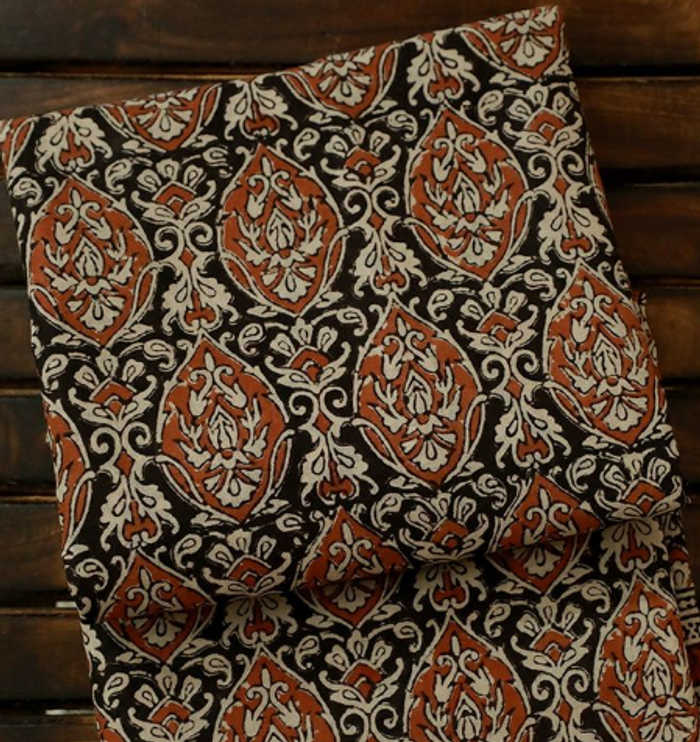Published 21:09 IST, May 1st 2024
This artisanal technique involves a laborious process of printing on cotton fabric, using natural dyes derived from local vegetables and minerals.
Advertisement
In yet another move to protect and promote India's textile heritage, the traditional Ajrakh artisans from the widely-acclaimed district of Kutch, Gujarat, have been honoured with a Geographical Indication (GI) tag. The Office of the Controller General of Patents, Designs, and Trademarks (CGPDTM) granted this recognition, highlighting the unique cultural value and intricate craftsmanship of 'Kutch Ajrakh.'
Kutchi hand-block printing style
Ajrakh, an ancient form of hand-block printing, is deeply embedded in the cultural fabric of Gujarat. Its roots are widespread, reaching into the historical regions of Sindh, Barmer, and notably Kutch, where it has been practiced for centuries. This artisanal technique involves a laborious process of printing on cotton fabric, using natural dyes derived from local vegetables and minerals. Each step—from resist dyeing to printing—demonstrates a high level of skill and an unwavering commitment to traditional methods.
Advertisement
The craft is centered in the villages of Dhamadka and Ajrakhpur, the latter being particularly significant in the history of Ajrakh. Originating about 400 years ago with the Sindhi Muslim communities, Ajrakhpur has become a focal point for this exquisite textile art. Here, generations of artisans have preserved the traditional methods while also adapting to contemporary tastes and technologies.

The GI tag serves multiple purposes. Primarily, it acts as a marker of authenticity, ensuring that only textiles produced in these regions can be marketed under the name 'Kutch Ajrakh.' This not only helps protect the artisans' intellectual property but also guards against counterfeit practices, thus supporting the local economy. Additionally, the tag encourages a deeper appreciation for the cultural narratives woven into each piece of Ajrakh fabric.
Advertisement
Moreover, this designation plays a critical role in promoting sustainable practices within the community. By securing a better market position, artisans can ensure stable livelihoods, contributing to the economic resilience of the region. For consumers, the GI tag provides assurance of quality and authenticity, enabling them to make purchases that support genuine craftsmanship and cultural heritage.
The recognition of Kutch Ajrakh with a GI tag is not just a win for the artisans but a celebratory moment for all stakeholders in the traditional crafts sector of India. It promises to elevate the profile of Ajrakh on the global stage, inviting textile enthusiasts and cultural historians alike to explore the rich tapestry of Kutch's artisanal legacy.
Advertisement
21:09 IST, May 1st 2024